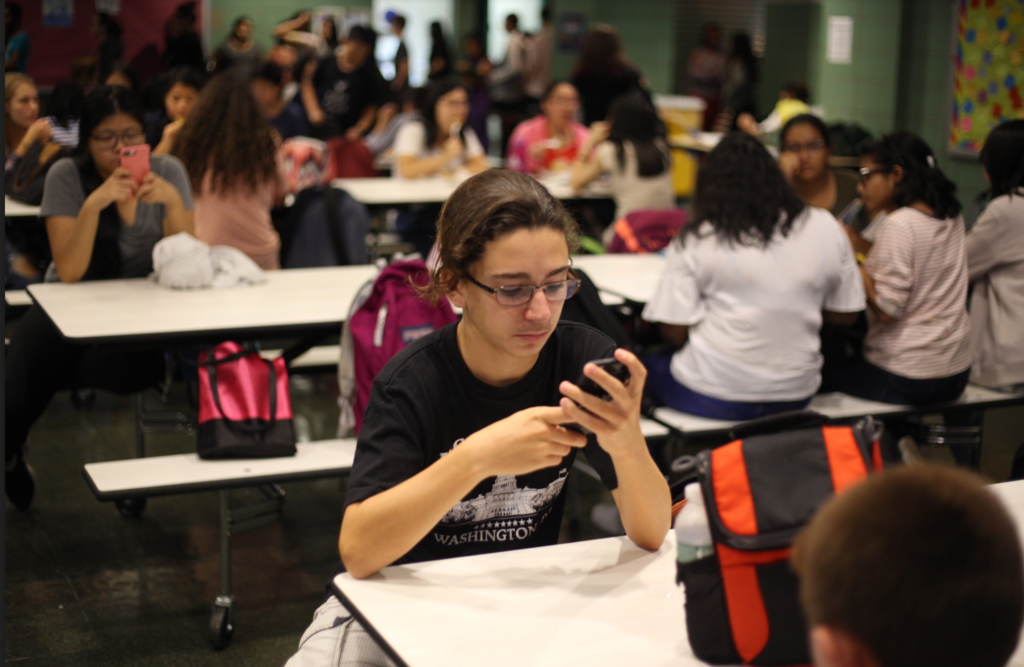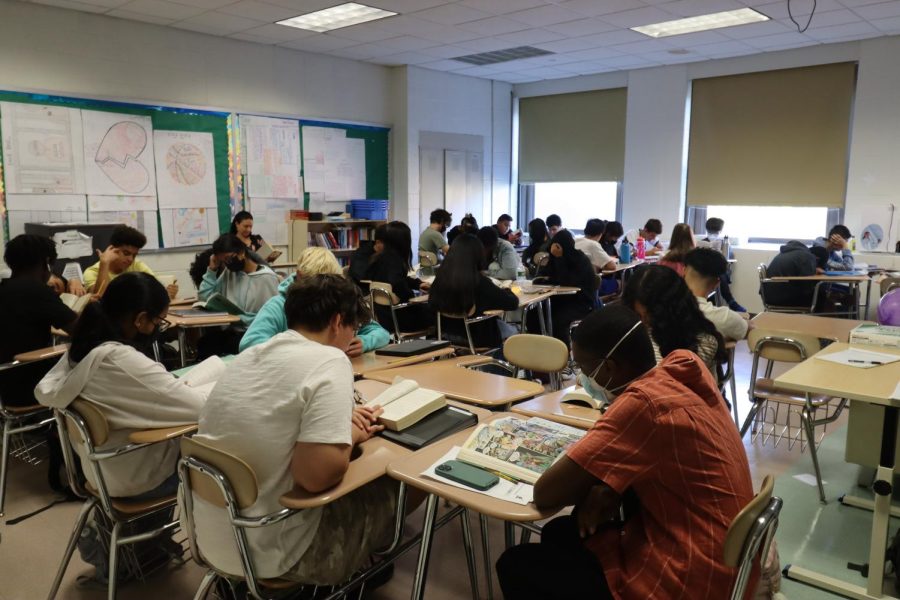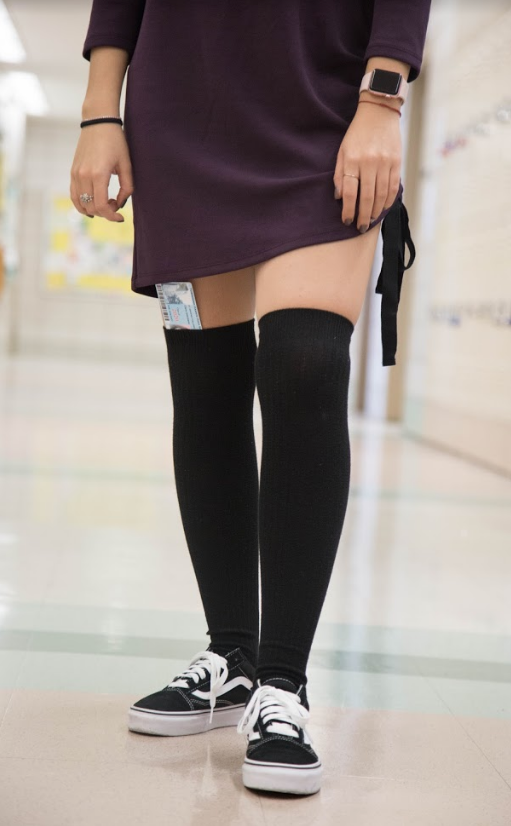
In 2017, #MeToo went viral, breaking decades of silence regarding sexual harassment and violence in both the entertainment industry and the workplace. The hashtag, which was created after dozens of sexual harassment allegations against Harvey Weinstein, ultimately became synonymous with unity against sexual misconduct. As a result, proponents of the #MeToo movement have connected sexism in America to school dress codes.
“Dress code enforcement easily reproduces exactly the types of behaviors that adults are seeking to prevent. They involve a pattern of silence, shame and obedience in situations where someone bigger and more powerful tells a girl what to do with her body,” Soraya Chemaly wrote in an article for The Washington Post. “These are lessons in the dynamics of power, control and silence in abusive situations. They are also lessons in male sexual entitlement.”
In light of this, we decided to get the numbers, looking to measure ways by which the dress code could potentially create vastly different experiences according to gender. The results of a survey of two classes each from the current tenth, eleventh, and twelfth grades demonstrate a distinction in how the dress code affects students, dependent on their gender. In particular, girls report having to more frequently consider dress code restrictions when making outfit choices in the morning while preparing to go to school. The results show that 80% of girls always, often, or sometimes take the dress code into account when getting ready in the morning. On the opposite side, 80% of boys surveyed say that they rarely or never think about the dress code when getting ready for school.
We expanded our survey for the senior class, which has had the most experience with the dress code in the building. The results of a survey of 201 current seniors (taken at the end of their junior year) revealed that of the 20 current seniors who report receiving demerits pertaining to dress, 90% are female, 5% are male, and 5% identify as non-binary. Of the 137 female seniors surveyed, 13% reported having received demerits for dress code violations; of the 62 male seniors, 2% reported having received demerits for dress code violations.
The survey invited students to share comments and feelings on the dress code anonymously.
“The dress code is sexist, overly strict, and needs to change,” stated a senior female.
A senior male further explained, “The current dress code is sexist and unfair. While there should be rules on what is appropriate, most females at THHS are unable to dress stylishly or comfortably because of the stringent policies enforced here.”
For years, students have used the pages of The Classic to share concerns about the dress code and its role in creating a sexist environment at THHS. In 2013, staff writer Catherine Moskos called the dress code and its enforcement sexist, a view expressed in her opinion piece “Code behind the dress code: Boys matter more.”
Moskos cited correspondence of the administration, who had sent out an email deeming certain types of clothing inappropriate for school and making it clear that certain articles of clothing, mainly those worn by girls, are seen as a distraction. “The email reminded that the dress code ‘has been devised to promote a positive learning atmosphere’ and that attire must not ‘interfere with the educational process.’ It discussed dresses, leggings, undergarments, shorts, which are ‘specific items that may cause distraction.’”
“People might also claim that dress codes are not sexist, but are merely meant to preserve students from distraction in an educational atmosphere,” Catherine wrote. “It’s abundantly clear that these ‘distractions’ are the hypothetical distractions that scantily clad women will create for males.”
Later, she continued, “This idea of distraction unfairly places blame on women. I shouldn’t need to care about the potential that a boy cannot handle being distracted by women’s bodies anymore than I need to care that a student in a computer lab can’t stop himself from playing solitaire and missing the lesson. It’s called personal responsibility.”
Dean Robin Figelman feels that the restrictions placed on clothing by the dress code apply equally to students of all genders. Ms. Figelman stated, “[The dress code is] supposed to prepare everybody for the future to be dressing as a professional. But not everybody sees that, and they feel like we’re stifling them and that we are mean and have too many rules. It’s really to prepare you for what happens… after high school.”
She continued, “More girls do disobey the dress code because there are more girls. There are some boys that push the limits as well…. Sometimes I have to find some of the seniors or some of the underclassmen and ask them to pull their pants up.”
As mentioned by supporters of the dress code, the regulations are meant to promote a professional environment that fosters a positive educational atmosphere.
“I believe it is necessary to have a dress code because the way everyone dresses impacts the way the school environment feels. It’s why professional offices maintain a dress code,” said senior Max Kurant.
“The problem is that we don’t need it to be as restrictive as it is currently; there’s no point in not being allowed to wear shoulderless shirts or being forced to wear shorts/skirts so low. What we’re doing now, quite frankly, accomplishes nothing,” he added, referring to just two of the features of our dress code that students disagree with.
In Townsend Harris today, students still express views similar to those of Moskos. “It is offensive that females are expected to cover their shoulders so they can avoid distracting their male classmates,” a female senior said in her survey.
“Girls shouldn’t have to change the way they dress because males might get distracted,” added another female senior respondent. “Instead, they should be taught to respect females no matter what they’re wearing. Girls’ lives/clothing shouldn’t be affected because of potential disrespect [from males].”
“[Feminism] really doesn’t play anything in the dress code. I don’t look at the popularity of feminism, and I don’t [take] any of that into account. We basically take into account what we want to see our students in and how [students] are going to succeed in our school dressed professionally,” Ms. Figelman commented in response to the rise of feminist opposition to the outfit restrictions.
“I think it’s wrong that people say you need to dress a certain way as not to distract boys, which is how people discuss dress codes,” said AP English Language teacher Christine Duffy.
“There’s evidence of [dress code] being applied unevenly to certain kinds of girls, like depending on your body type. Then, it’s definitely a sexist application; some girls are tall, so sometimes it’s hard to find a longer skirt. I understand why this is problematic, but I do feel like there should be a certain level of professionalism in the way that you dress.”
Senior advisor and physical education/health education teacher Maria Assante, however, addresses the additional burden placed on females. “We put different standards on women than we do on men and there’s the [feminist] argument right there,” she said. “We say that girls need to dress a certain way so they don’t distract the boys, but why are we putting all the responsibility on girls and not putting the responsibility on boys? Rather than teaching our girls how to dress, we need to teach our boys how not to rape; we need to teach our boys not to sexually harass. We need to teach our girls how to demand respect.”
While the #MeToo allegations are occurring within the entertainment industry, women’s rights within the political realm are also being questioned. The public exposure of allegations defined the line between what is acceptable in the private sphere compared to that of the political sphere, as exemplified in the circumstances surrounding the Brett Kavanaugh hearing.
“The government sets the example for how [sexual] assaults and accusations should be handled, and the use of political bias in swaying the investigation and the uproar caused by it makes it seem that even if women can vouch for experiences they have had, they can be overlooked,” explained senior Bria London.“That is a very frightening thought.”
“Many women complain about the [dress code] restrictions placed on them, citing them as a burden,” said senior Tyler Tavares. “While this may be true, the school claims it is for the girls’ own good. They claim it is to prevent being a distraction to boys. While this is true to a certain extent, I believe that the school should also then take the proper steps to inform both boys and girls about sexual misbehavior and how to prevent it.”
Despite the heated controversy about these restrictions, not all students are against the ideals of dress code and believe it is enforced the same way for everyone. “Honestly, I don’t mind the current dress code. If people follow the rules and wear appropriate clothing all would be fine,” said a female senior survey respondent.
“With changes that go in society with dress and apparel, I think [the dress code] can change a little bit. But [in regards to] the length of the skirts and the shorts, I don’t know if that is going to change anytime soon,” said Ms. Figelman. “I think it’s more of a safety issue. When girls walk up staircases, you don’t want anybody looking up, and girls don’t get that. They think it’s feminism. It’s really not. It’s just to protect them.”
Whether or not the dress code really does protect girls, it struggles to remain straightforward in the way it defines professionalism in the school environment.
“I don’t think the dress code should end, per se, because everybody has a uniform that they have to wear to work,” Ms. Assante said. “I’m still going to stick with my fact that the onus is put on the girls. The boys aren’t showing too much skin. They aren’t wearing things that are too short or too tight, their bellies aren’t showing; but we vilify girls’ bodies and we shouldn’t be doing that. But then again, what is appropriate for work? Let’s say a teacher wore a skirt to school but her skirt was really short. Is it still appropriate? There’s no easy answer.”
Correction: In the original version of this article, the text listed the percentages of current seniors, by gender, who reported receiving demerits for dress code violations. While the percentages remain correct, the total number of seniors who reported receiving demerits is 20, not 46 as originally reported. The number 46 included other grades, rather than the senior class alone. This article has been updated to reflect that; we regret the error.




























